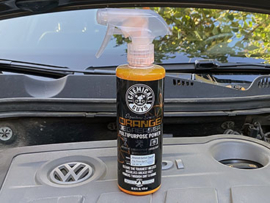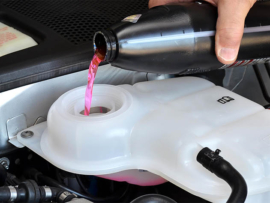P0198 – Engine Oil Temperature Sensor A Circuit High
OBD-II code P0198 indicates that the engine control module (ECM) has detected a high voltage input signal from the engine oil temperature sensor or its circuit. The engine oil temperature sensor is responsible for monitoring the temperature of the engine oil, providing crucial data to the ECM for proper engine performance and fuel management.
When the ECM receives a high voltage input from the engine oil temperature sensor, it interprets this as an abnormally high engine oil temperature reading. This may not necessarily mean that the engine oil is overheating; rather, it indicates a potential issue with the sensor, its wiring, or the associated circuit. If the ECM receives an excessively high temperature signal, it may initiate protective measures, such as altering fuel delivery or ignition timing, to prevent potential engine damage. The code’s presence triggers the check engine light on the dashboard, alerting the driver to the problem.
Fixes for OBD-II Code P0198
To fix DTC P0198, a series of steps should be followed:
- Inspect the Engine Oil Temperature Sensor. Inspect the engine oil temperature sensor, first, and its wiring for any signs of damage, corrosion, or loose connections. A faulty sensor or a poor electrical connection could cause the high input voltage.
- Check the Engine Oil Level and Temperature. Verify the actual engine oil level and temperature using a dipstick or electronic gauge. Ensure that the engine oil level is at the correct level, and if it’s genuinely overheating, investigate the cause of the excessive temperature, such as a faulty oil cooler or cooling system problem.
- Test the Engine Oil Temperature Sensor. If the engine oil level and temperature are normal, use a digital multimeter to test the engine oil temperature sensor’s resistance and compare it to the manufacturer’s specifications. A significant deviation from the expected readings may indicate a faulty sensor that needs replacement.
- Check the Wiring and Circuit. Inspect the sensor’s wiring harness and connector for signs of damage, fraying, or loose connections. Repair or replace any damaged wiring or connectors as necessary.
- Clear the Code and Road Test. After performing the necessary repairs, clear the trouble code using a scan tool (you can pick such a tool by link) and take the vehicle for a test drive to ensure the code does not reappear. If the issue is resolved, the check engine light should turn off.
Note: If you are struggling with conducting any operations, it is recommended to consult a qualified mechanic or visit a service station.
Related DTCs to P0198
There are some codes that likely would have been shown along with the aforementioned code: P0116, P0125, P0195, P0196, P0197, P0199.
FAQs
How much does it cost to fix the code P0198?
The cost to fix code P0198 can vary depending on several factors, including the make and model of the vehicle, the location of the sensor, and whether you choose to do the repair yourself or take it to a professional mechanic. In general, the total average cost to fix code P0198 can range from $100 to $300.
If you decide to do the repair yourself, the main expense will be the cost of the new engine oil temperature sensor. Engine oil temperature sensors typically range in price from $20 to $100, depending on the brand and where you purchase it. Keep in mind that the cost may also include other necessary materials, such as gaskets, sealants, or antifreeze, if they need replacement during the repair.
Can I continue driving with the P0198 code?
Continuing to drive with the DTC P0198 is generally not recommended. The P0198 code indicates a problem with the engine oil temperature sensor, which is an essential component for the proper functioning and protection of the engine. Ignoring this code and driving with a faulty engine oil temperature sensor could lead to potential issues and risks for your vehicle.
How is the code P0198 serious?
The P0198 code is considered serious because it indicates a problem with the engine oil temperature sensor. This sensor is crucial for proper engine operation and protection. If the engine oil temperature sensor is malfunctioning or providing inaccurate readings, it can lead to several potential issues.
We do an efforts to find, research and recommend the best products. So, we may receive commissions from purchases that you make after following the links in our product reviews.








Leave A Comment